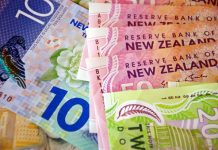Key insights from the week that was.
In Australia, the Westpac-MI Consumer Sentiment Index reported another encouraging lift, rising 4% from 92.2 in February to 95.9 in March. Easing cost-of-living pressures and the RBA’s decision to cut interest rates in mid-February supported the improvement in sentiment, following a few months of stabilisation around a ‘cautiously pessimistic’ level. The sub-indexes covering ‘family finances vs a year ago’ and ‘time to buy a major household item’ have been the chief laggards in the recovery to date, remaining well below long-run average levels. Constructive developments around inflation and interest rates are starting to turn the tide however, the sub-indexes rising 2.1% and 6.9% respectively in March. Forward-looking indicators are now all above their respective long-run averages which, along with positive views on the labour market, bodes relatively well for the economic outlook.
That said, the latest NAB business survey reminds us that the recovery is likely to be gradual and potentially bumpy. At +4, business conditions remained little changed at a below-average level in February, as firms reported a further deterioration in trading conditions and profitability. Given the persistence of this dynamic, business confidence continues to hover around a broadly neutral level, consistent with the notion that the pick-up in demand is likely to occur at a measured pace. While not fully apparent in the data yet, the fog of heightened trade tensions, coinciding with an upcoming federal election, is likely to keep businesses cautious in the near-term.
Offshore, the balance between growth and inflation is becoming increasingly precarious for central banks.
The US CPI came in below expectations in February, the headline and core measures both up 0.2% in the month and respectively 2.8% and 3.1% over the year. Food and energy inflation was negligible in the month. Within the core basket, shelter inflation eased to 0.3%, although that still equates to a 3.6% annualised rate which is elevated compared to history. Other services were neutral in the month, but inflation in this sub-sector remains stubbornly above target over the year. Core goods inflation also remained positive in the month, prices up 0.2% in February, ahead of the implementation of tariffs.
US trade policy meanwhile continues to escalate risks over the outlook for growth in the US, with President Trump holding fast to the planned full implementation of announced tariffs by 2 April and threatening to increase tariffs against any country who responds to the US’ measures. In particular, overnight President Trump threatened to impose a 200% tariff on wine, champagne and other alcoholic beverages from Europe if a proposed European tariff on US whiskey is implemented – itself a retaliation to the US’ steel and aluminium tariffs which President Trump brought forward from 2 April to 12 March this week and has vowed no exemptions for. Consumer spending and confidence has been impacted to date, and there are numerous reasons to expect businesses to take a cautious approach to investment hence. Full detail on our US view will appear in the March Market Outlook on Westpac IQ later today.
With the risks to Canadian growth from US trade policy front and centre, the Bank of Canada this week lowered its policy rate by 25bps to 2.75%. While recent data has pointed to stronger-than-expected growth with inflation at target, downside risks are immediate and material. In short, growth is anticipated to be hampered by the tariffs directly through trade and due to deteriorating confidence amongst businesses and consumers. Businesses are reportedly delaying hiring and investment decisions and are also looking to change suppliers and keep more inventory on hand, adding to costs. At the same time, tariff news has also raised inflation expectations which the Bank is paying close attention to. In the press conference, Governor Macklem emphasised the importance of keeping inflation expectations anchored and avoiding second-round effects. On future moves, uncertainty was a key theme with Macklem not ruling out a hike or a recession given the uncertainty surrounding US trade policy.
Finally to Japan, wages data showed a 2.7% increase in base pay in January, led by the manufacturing sector. While nominal wages continue to increase, real wages fell 1.8%yr. RENGO had negotiated a wage increase of 3.6% for FY24 (ending March 2025) and employees have seen their nominal wages increase through this period. However, with inflation slow in abating, real wages have failed to gain, putting household spending at risk. This week, Q4 GDP was revised down to 2.2% annualised from a preliminary reading of 2.8%. The downshift came in part due to downward estimates to households spending which is now flat for Q4.
Still, Bank of Japan officials have continued to signal that rates will rise further, anticipating growth will pick up through the latter part of the year. Adding support to their considerations will be RENGO’s announcement of the first estimate of the wage bargaining result. RENGO demanded an increase of 6.0% and this first estimate will mostly cover results from large companies. So far, large manufacturers such as Mitsubishi, Nippon and Toyota among others have reportedly met RENGO’s demand. While this is positive news, the focus will be on how small businesses fare, data for which will be released over the next month. The BoJ is likely to remain on hold at its meeting next week waiting to digest more data and the outlook for small businesses first before making their next move. With a fresh set of forecasts and greater clarity around trade risks, their next hike will likely come in May.












